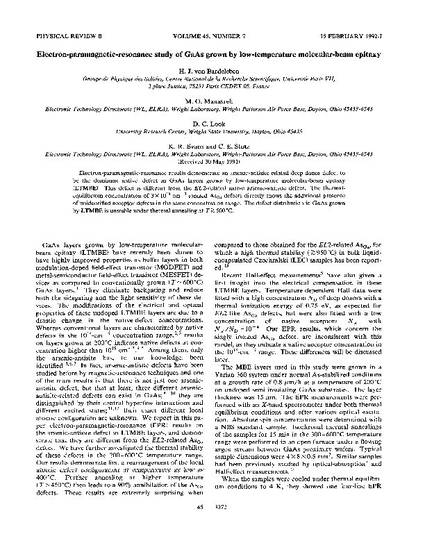
Article
Electron-Paramagnetic-Resonance Study of GaAs Grown by Low-Temperature Molecular-Beam Epitaxy
Physical Review B
Document Type
Article
Publication Date
2-1-1992
Disciplines
Abstract
Electron-paramagnetic-resonance results demonstrate an arsenic-antisite related deep donor defect to be the dominant native defect in GaAs layers grown by low-temperature molecular-beam epitaxy (LTMBE). This defect is different from the EL2-related native arsenic-antisite defect. The thermal-equilibrium concentration of 3×1018 cm−3 ionized AsGa defects directly shows the additional presence of unidentified acceptor defects in the same concentration range. The defect distribution in GaAs grown by LTMBE is unstable under thermal annealing at T≳500 °C.
DOI
10.1103/PhysRevB.45.3372
Citation Information
H. J. Vonbardeleben, M. O. Manasreh, David C. Look, K. R. Evans, et al.. "Electron-Paramagnetic-Resonance Study of GaAs Grown by Low-Temperature Molecular-Beam Epitaxy" Physical Review B Vol. 45 Iss. 7 (1992) p. 3372 - 3375 ISSN: 0163-1829 Available at: http://works.bepress.com/david_look/1/

The original publication is available at http://prb.aps.org/abstract/PRB/v45/i7/p3372_1